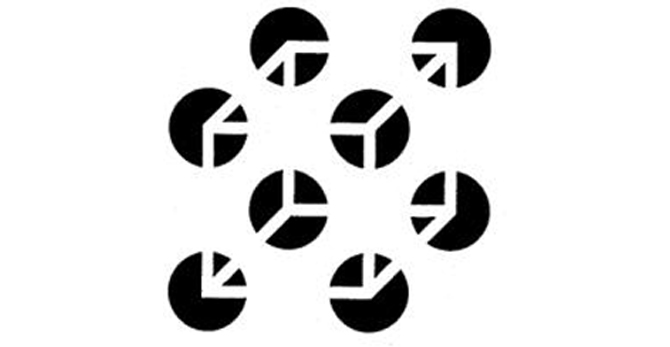"The Two Dimensional Field: Forces Within The Screen" by Zettl
Currently, we are in an age of electronics. We spend more time sitting in front of a screen than ever before, whether it be of a television, computer, or other mobile device. When using these devices, we operate in a picture space that is not "real" in the sense that when we turn the device, the content of that space is gone.
Despite this space not being real, there are aspects of the space content that can be manipulated to make them feel more real, or to create other desired effects in the audience. In this chapter, Zettl describes some of the forces that can be used by a media creator. These forces include:
- Main directions
- Magnetism of the frame and attraction of mass
- Assymetry of the frame
- Figure and ground
- Psychological closure
- Vectors
Main Directions
 The two main directions Zettl talks about are the ones you would suspect: vertical and horizontal. Each of these planes create different feelings in a viewer depending on which dominates the content. Dominant vertical planes create powerful, grandiose feelings while dominant horizontal planes create calm, tranquil feelings. To the left you can see how comforting a horizontally-oriented picture can be.
The two main directions Zettl talks about are the ones you would suspect: vertical and horizontal. Each of these planes create different feelings in a viewer depending on which dominates the content. Dominant vertical planes create powerful, grandiose feelings while dominant horizontal planes create calm, tranquil feelings. To the left you can see how comforting a horizontally-oriented picture can be.
This picture to the right is interesting because it has an even balance between horizontal and vertical lines. The top of the picture seems imposing and impressive and evokes feelings of power while the bottom portrays serenity within the grand picture of the city. Another point Zettl makes is that when we disrupt these lines, we create different feelings. For example, when we tilt the comforting horizontal lines, we disrupt the calm feelings as well and we are left with discomfort and stress, such as in the picture below. Despite a serene sunset and relaxing colors, the tilted plane keeps you on edge.

Psychological Closure

 Among the rest of the forces Zettl desribes, I found psychological closure to be the most interesting. I like this aspect because it relies on some of the most basic functions of how we see and even think. When we open our eyes and look at something, everything that we see is almost instantly processed by our brain in a number of different ways. This is called parallel processing. We divide visual information into color, shape, motion, and depth and cross-reference all of the information with stored memories. Psychological closure works very similarly in that when we see in image with minimal information, our brain categorizes it and also fills it in with extra information that helps us make sense out of the image. This occurs most often by filling in imaginary visual lines to help group or complete objects, which is called closure, but the three other types are also types of psychological closure.
Among the rest of the forces Zettl desribes, I found psychological closure to be the most interesting. I like this aspect because it relies on some of the most basic functions of how we see and even think. When we open our eyes and look at something, everything that we see is almost instantly processed by our brain in a number of different ways. This is called parallel processing. We divide visual information into color, shape, motion, and depth and cross-reference all of the information with stored memories. Psychological closure works very similarly in that when we see in image with minimal information, our brain categorizes it and also fills it in with extra information that helps us make sense out of the image. This occurs most often by filling in imaginary visual lines to help group or complete objects, which is called closure, but the three other types are also types of psychological closure.
No comments:
Post a Comment